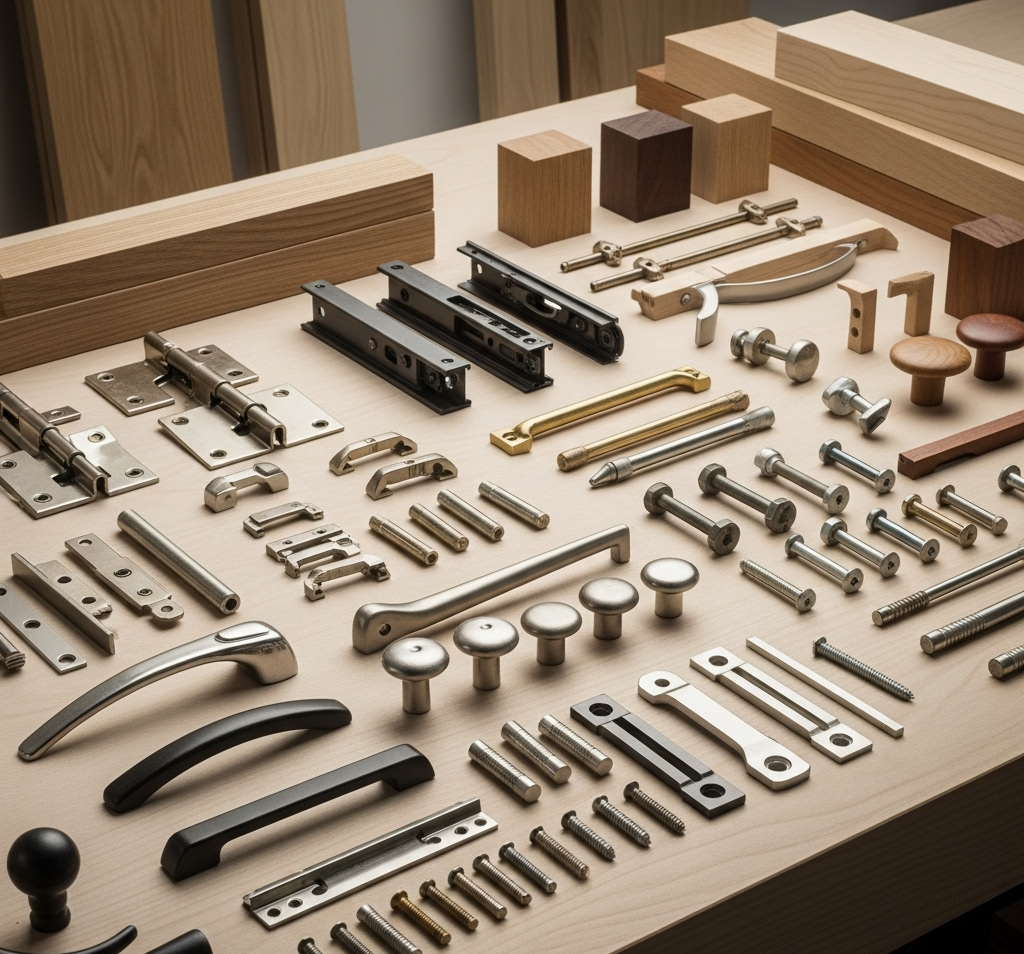
In the wood manufacturing industry, producing high-quality furniture, cabinetry, or architectural woodwork relies heavily on sourcing the right hardware and joinery components. These items—hinges, drawer slides, fasteners, connectors, and more—are critical to ensuring durability, functionality, and aesthetic appeal. Procurement teams play a pivotal role in securing these components, balancing cost, quality, and supply chain reliability. This blog post explores the strategies, challenges, and best practices procurement teams use to source hardware and joinery components in the wood manufacturing industry.
Hardware Components
These include mechanical parts such as:
Screws, nails, and bolts
Hinges, knobs, and handles
Drawer slides and runners
Locking systems and brackets
Joinery Components
These refer to materials used to connect wooden elements, including:
Dowel pins
Biscuit joints
Corner brackets
Cam locks and fast-fit connectors
Each component must be chosen to match the type of wood, intended use, load-bearing capacity, and finish requirements.
Effective sourcing requires a strategic approach tailored to the wood manufacturing industry’s unique needs. Here are the primary strategies procurement teams employ:
Procurement teams prioritize suppliers with a proven track record of delivering high-quality hardware and joinery components. They evaluate suppliers based on:
Product Quality: Ensuring components meet industry standards (e.g., ANSI/BHMA for hinges or ISO certifications).
Production Capacity: Confirming suppliers can handle order volumes, especially for large-scale furniture production.
Lead Times: Selecting suppliers with efficient delivery schedules to align with manufacturing timelines. Trade shows, such as Interzum or AWFS Fair, and online platforms like ThomasNet or Alibaba, are common venues for discovering reputable suppliers.
Building long-term partnerships with suppliers ensures consistent quality and priority access during supply shortages. Procurement teams collaborate with suppliers to:
Customize components, such as designing specialized hinges for unique cabinet designs.
Share production forecasts to help suppliers plan inventory, reducing lead times.
Negotiate favorable pricing and terms for bulk or recurring orders.
While cost is a key consideration, procurement teams avoid compromising on quality. They use Total Cost of Ownership (TCO) analysis to evaluate suppliers, factoring in:
Component price
Shipping and logistics costs
Potential rework or warranty costs due to defective parts For example, a cheaper hinge may save upfront costs but lead to failures that damage brand reputation. Procurement teams often source mid-tier components that balance affordability with durability.
Global supply chain disruptions, such as material shortages or shipping delays, can halt production. Procurement teams mitigate risks by:
Diversifying Suppliers: Sourcing from multiple vendors across different regions to avoid over-reliance.
Local Sourcing: Prioritizing regional suppliers to reduce shipping times and costs, especially for heavy components like metal brackets.
Inventory Buffering: Maintaining safety stock for critical items like fasteners to prevent production delays.
Procurement teams use digital tools to streamline sourcing:
Procurement Software: Platforms like SAP Ariba or Coupa track supplier performance, manage contracts, and monitor inventory levels.
Data Analytics: Analyzing historical purchasing data helps identify cost-saving opportunities or predict demand for components like drawer slides during peak furniture sales seasons.
e-Procurement Platforms: Online marketplaces enable quick comparison of supplier offerings, specifications, and pricing.
Sustainability is increasingly important in wood manufacturing. Procurement teams source hardware and joinery components from suppliers with eco-friendly practices, such as:
Using recycled metals for hinges and fasteners.
Partnering with suppliers who adhere to environmental standards like FSC (Forest Stewardship Council) for wood-based joinery components.
Selecting durable components to extend product lifespan, reducing waste.
Procurement teams face several challenges unique to the wood manufacturing industry:
Component Compatibility: Ensuring hardware matches specific wood types or finishes, such as selecting corrosion-resistant screws for outdoor furniture.
Global Supply Chain Volatility: Tariffs, shipping delays, or raw material shortages (e.g., steel for hinges) can disrupt supply.
Customization Needs: Unique designs often require bespoke components, which can increase costs and lead times.
Quality Control: Verifying that components meet precise specifications to avoid issues like misaligned joints or faulty drawer slides.
Strong collaboration between procurement and production teams ensures component specs align with design requirements. For example, when a new cabinet model is being developed, the procurement team should be looped in early to source compatible fasteners and hinges that meet both functional and aesthetic criteria.
Sourcing hardware and joinery components in the wood manufacturing industry is a complex but critical task. Procurement teams must balance cost, quality, and reliability while navigating supply chain challenges and sustainability demands. By leveraging supplier relationships, technology, and strategic sourcing practices, they ensure a steady supply of components that meet the industry’s high standards. As the wood manufacturing sector evolves, procurement teams will continue to play a vital role in driving efficiency, innovation, and sustainability, ultimately contributing to the creation of high-quality, durable wood products.
support@lassoprocurement.com
© 2025 Lasso Supply Chain Software LLC
This website uses cookies to ensure you get the best experience on our website.
